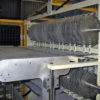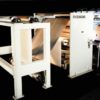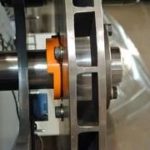While many companies only talk quality, Colbert Packaging does quality. Since it was founded 32 years ago, this Lake Forest, IL.-based business has earned a reputation as a quality manufacturer of folding cartons.
From a modest beginning in a basement to its present 92,000-square-foot facility, Colbert Packaging has grown steadily to become the successful operation it is today. Colbert’s niche lies in its ability to service the health care field. As a certified supplier, Colbert consistently produces cartons that meet the industry’s high standards.
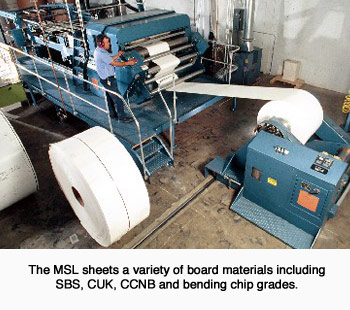 Colbert’s work in the pharmaceutical industry makes up about 45 percent of the company’s product mix. The remaining business comes from the stationary, food, hardware, and toy industries. The common bond that link’s Colbert’s customers is their requirement for high-quality specialty work. As Bob Grabowski, Colbert’s plant manager explains, “While our primary focus has been in the health care field, we’ve branched out into other areas as a result of our quality emphasis.”
Colbert’s work in the pharmaceutical industry makes up about 45 percent of the company’s product mix. The remaining business comes from the stationary, food, hardware, and toy industries. The common bond that link’s Colbert’s customers is their requirement for high-quality specialty work. As Bob Grabowski, Colbert’s plant manager explains, “While our primary focus has been in the health care field, we’ve branched out into other areas as a result of our quality emphasis.”
Operations in Lake Forest include sheeting, printing, die cutting, finishing, and windowing. The company’s quality control department is staffed by five employees who monitor the quality process during each stage of production. A second plant in South Bend, Ind., handles all of the company’s set-up box and game board business. Colbert’s printing equipment includes a six-color Heidelberg with tower coater, six-color Planeta, five-color Crabtree, and two two-color Heidelbergs. The six-color Heidelberg is a recent addition to Colbert’s pressroom, and offers the company expanded capabilities.
However, when the new press came on-line, Colbert sheeted 80 percent of its board stock on an older sheeter. The remaining 20 percent was purchased in sheet form from the mills. “Because our sheeter was old and not very accurate, it required four-side trimming.” Grabowski recalls. “This extra labor step had to be built into our cost estimates. With a new sheeter, we could get trimmed four-side quality sheets without having to trim.”
Optimizing Efficiency
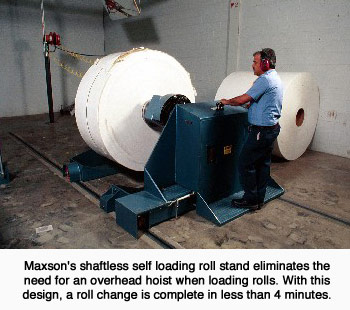
In addition to requiring a high level of accuracy ,Colbert needed a sheeter that could offer quick set-up. “Ease of operation was very important since our orders range from 5,000 to 25,000 sheets,” Grabowski says. After investigating several sheeter designs, Colbert selected the MSL Sheeter from Maxson Automatic Machinery Co., Westerly, R.I. The MSL has a close tolerance drive that provides press-ready sheets. The sheeter also features an automatic size change option, which speeds set-up. “With up to seven changeovers each shift, the automatic size change really makes a difference Grabowski says.
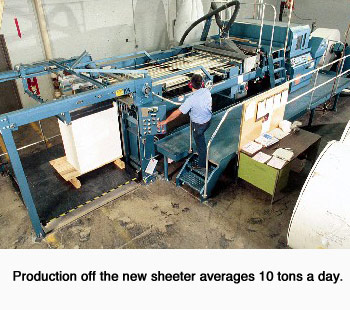
To optimize efficiency during roll changes, a shaftless self-loading roll stand was also selected, which eliminates the need for an overhead hoist when loading rolls. With this design, the operator simply moves the roll into place. The back stand cradles the roll, chucks it, and lifts it into position. A roll change is complete in four minutes.
“Our first consideration is the quality of the sheets,” Grabowski says. With this in mind, Colbert selected options that would minimize sheet defects. These include a dancer roll tension control system and penetrating breaker roll decurl. The dancer roll system absorbs web fluctuations when sheeting egg-shaped rolls and ensures a smooth flow into decurler. A penetrating breaker roll decurl conditions the web and provides a flat sheet. As a quality supplier, Colbert is unforgiving when it comes to dust. To combat dust-related problems such as hickies, Colbert has a three-stage approach.
First, the Maxson sheeter has a dust collector, which cleans the sheeted stock. Then, an Automatan jogger aerator cleans the skids of paperboard in preparation for printing. The last stop is at the press itself where the sheets are cleaned a final time. At Colbert, the MSL sheets a variety of board materials including SBS, CUK, CCNB, and bending chip grades. Production off the MSL averages 10 tons a day.
“With our older sheeter, we had to factor in an extra day’s lead time for guillotine trimming. Now with the MSL, we can sheet and print in one day,” says a service-oriented company Colbert can provide faster turnarounds. If necessary, orders can be processed in less than a week.
“Our business has been strong, with one rush after another. The Maxson has done whatever we’ve wanted it to do. Having a large inventory on hand means we can turn it around that much faster. We have trucks coming in the door with stock and the Maxson keeps up with our presses,” Grabowski says, adding, “we’ve expanded our capacity without having to add more people.” This additional capacity also means more business opportunities.
Colbert is already soliciting business outside of the Midwest. A recent order for sports cards is one example of how Colbert has targeted high-quality specialty users as potential customers. As demand for high-quality work increase, Colbert has the facilities, people and equipment necessary to meet this challenge. With all of these elements in place, Colbert’s tradition of quality and service continues.
Reprinted from Paperboard Packaging, September 1992


